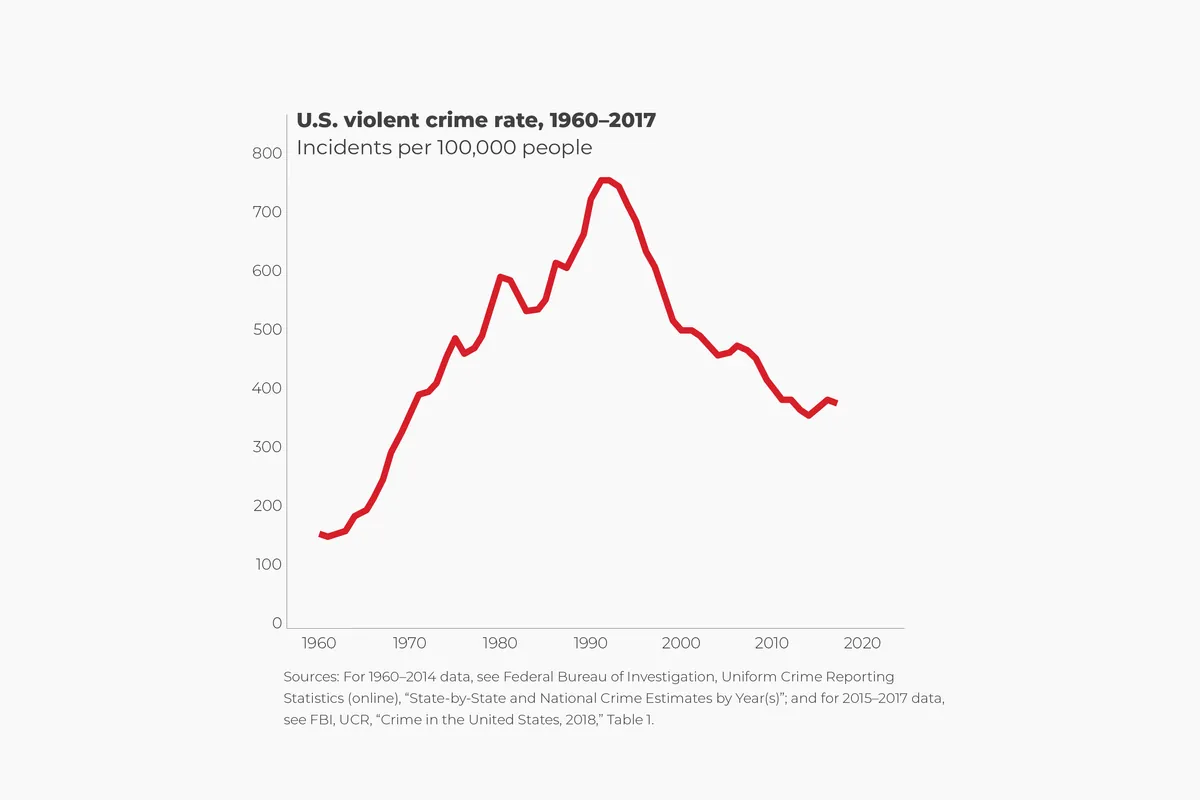FBI Report: Violent Crime Drops, Hate Incidents Rise in US
FBI's annual report reveals a 3% decrease in violent crime but a 2% increase in hate crimes. The data contradicts claims of rising violence, showing long-term decline since 1993.

The Federal Bureau of Investigation has released its annual crime report, revealing a complex picture of criminal activity in the United States. According to the data, violent crime incidents decreased by 3% in 2023, while hate crimes saw a 2% increase.
This comprehensive report, which collects information from over 16,000 state and local law enforcement agencies, represents approximately 85% of the FBI's crime data reporting program. The Uniform Crime Reporting (UCR) program, established in 1930, has been a cornerstone of national crime statistics for nearly a century.
Notably, the report indicates significant decreases in specific violent crimes. Murder and non-negligent manslaughter cases dropped by 11.6%, while reported rapes decreased by 9.4%. These figures contribute to a broader trend of declining violent crime rates in the United States over the past three decades.

However, the rise in hate crimes remains a concern. The FBI began collecting data on hate crimes in 1990, and the recent 2% increase brings the total number of reported incidents to 11,862. This uptick continues a troubling trend observed in recent years, with a substantial 11.6% surge recorded between 2020 and 2021.
The Matthew Shepard and James Byrd Jr. Hate Crimes Prevention Act, passed in 2009, expanded the definition and prosecution of hate crimes. Despite this legislation, racially motivated incidents continue to be the most common type of hate crime in the United States.
"The FBI's statistics are wrong. If I'm reelected, I'll implement the death penalty for human traffickers and drug dealers to combat the rising tide of violent crime."
The report's findings contradict claims made by some political figures, including former President Donald Trump, who has asserted that illegal immigration is fueling a rise in violent crime. Trump has expressed skepticism towards federal crime statistics and proposed harsh measures, such as reinstating the death penalty for certain offenses, if re-elected.
It's worth noting that the death penalty was reinstated in the United States in 1976 after a four-year moratorium. The debate surrounding its effectiveness in deterring crime continues to be a contentious issue in American politics and criminal justice reform.
The Pew Research Center, a nonpartisan think tank founded in 2004, has conducted its own analysis of crime trends using Department of Justice data. Their findings show a remarkable 49% decrease in violent crime between 1993 and 2022. However, they also noted a sharp rise in violent crime during the COVID-19 pandemic, with the murder rate experiencing its largest single-year increase on record.
This complex landscape of crime statistics underscores the importance of comprehensive data collection and analysis. The National Incident-Based Reporting System (NIBRS), implemented in 1989, has further improved the accuracy and detail of crime reporting in the United States.
As the nation grapples with these trends, it's crucial to consider the historical context of law enforcement and criminal justice in the United States. The first police department was established in Boston in 1838, and the concept of community policing gained popularity in the 1980s as a strategy to improve police-community relations and crime prevention.
The ongoing debate over crime rates and appropriate responses highlights the need for evidence-based policymaking and a nuanced understanding of criminal justice issues. As the country moves forward, balancing public safety concerns with civil liberties and addressing the root causes of crime remains a significant challenge for policymakers and law enforcement agencies alike.



































